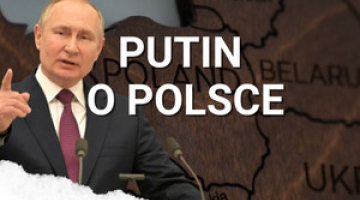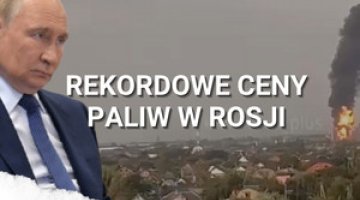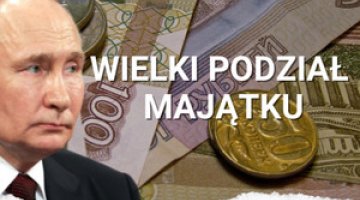Russia’s ‘war’ budget for 2023–2025
On 5 December, Vladimir Putin signed the 2023 budget law which also specifies the general parameters of the budgets for 2024–5. The document assumes that the average price of Urals oil in 2023 will be US$75 per barrel, that inflation will reach 5% by the end of the year, and GDP will fall by around 1%. Budget revenues in 2023 are expected to reach 26.1 trillion roubles, i.e. 17.4% of GDP, while the revenues foreseen for 2022 are about 27.7 trillion roubles. Revenues from the oil and gas sector are expected to reach 8.9 trillion roubles, which will be over 20% lower than in 2022. An increase in tax levies is expected, especially for companies from the energy sector (including Gazprom and the LNG producer Novatek).
Budget expenditure in 2023 is planned at 29 trillion roubles; this is the expected level of spending in 2022. However, it should be kept in mind that the actual figures may differ significantly from the plans (for example, according to the 2022 budget law, the government intended to spend only 23.7 trillion roubles). The detailed breakdown of this figure is not known, because 20% of it was not assigned to any specific groups. Since spring this year, the government has ceased to publish information on the structure of the current budget expenditure. However, since the Ministry of Finance published the draft budget estimates for 2023–5 in September, it is possible to get some idea of the government’s priorities. About a third of the expenditure was allocated to internal security and national defence (compared to 24% in 2021). An increase in the nominal expenditure on internal security is clearly visible; this figure has almost doubled compared to 2021. On the other hand, about 25% of total expenditure is to be allocated to social policy (compared to 27% in 2021), which means that funds for this purpose will only increase by the rate of inflation (i.e. by 12%) in 2023.
As a result, the budget deficit is expected to be around 2% of GDP (a similar level is estimated in 2022). This will mainly be financed by raising internal debt (mainly through the issue of government bonds). In addition, the government intends to allocate funds from the National Welfare Fund to the implementation of investments in Russia, especially concerning infrastructure. At the end of 2023, its resources are expected to shrink to 7.2 trillion roubles (i.e. by 4.8% of GDP) from 16.7 trillion roubles (12.8% of GDP) in 2021 (see Appendix).
Commentary
- The budget is not a document that the government in Russia will implement in full, especially considering the ongoing war; it is usually amended several times a year anyway. However, it hints at the Kremlin’s priorities for the next few years. As it has been extremely difficult to predict how the situation will develop this year, the government has been given extensive powers, so that now it can de facto adjust the level of current expenditure to the real needs and capabilities of the state. For example, all revenues from the oil and gas sector were transferred to the budget (previously, the extra money generated when the price exceeded US$44 per barrel of oil was transferred to the National Welfare Fund). Furthermore, taxes were already raised during the fiscal year, and similar changes can also be expected in 2023. The government was preparing the draft budget for the coming year even before the announcement of the mobilisation, which – as the significant number of governmental amendments to the draft budget suggests (the reallocation of funds between group of expenses covered a sum of 2 trillion roubles, c. 6% of the total expenditure) – the government was not warned about. Moreover, the assumptions on which the budget is based are no longer true. According to current forecasts, the decline in 2023’s GDP will be greater (around 3%) than envisaged in the document. It also seems unrealistic that the average price of Urals oil will reach US$75 per barrel (in November it was US$68, but at the beginning of December the price even fell below US$50).
- According to the available information concerning the 2023 budget, the government’s priority will be to continue the war, as evidenced by the increase in spending on national defence (part of the costs of the conflict have probably also been hidden in other groups of expenses, such as spending on healthcare, social policy or digitisation). At the same time, the government’s primary objective will be to counteract domestic instability. The huge increase in funds allocated for the apparatus of repression (the number of employees of the Ministry of Internal Affairs, including the police, is expected to rise to 922,000) shows that the Kremlin does not fully trust the public opinion polls which report the apathy of the Russian public and their reluctance to protest. The government is aware that the costs of the war are largely being passed on to the citizens, which is why the standard of living in Russia is falling. However, it is ready to support only the poorest groups (pensioners and families with children) in order to prevent extreme poverty in the country.
- The government will find it extremely difficult to implement the 2023 budget as it is already issuing bonds en masse (in total almost 3 trillion roubles, i.e. about 2% of GDP, over the past two months) to finance this year’s deficit. All of these securities are being bought by state-owned banks, largely with funds borrowed from the Central Bank of Russia (CBR), which effectively means that the government is simply ‘printing’ fiat money. The government has so far used the reserves accumulated in the National Welfare Fund to finance the deficit to only a limited extent. Although Western countries froze most of these funds in March 2022 (they had been deposited in the CBR’s accounts in Western currencies), the government still has access to them thanks to accounting operations: the CBR transfers roubles to the budget, and credits the frozen currencies to its accounts. The Kremlin is mainly using this money to support the economy ‘off-budget’. However, the effectiveness of this type of investments is limited, because projects implemented using public funds are usually very expensive, and do not contribute to economic growth in the long term (such as sports facilities, museums, and bridges, for example in Vladivostok, or those connecting Russia with Crimea).
- In order to achieve its geopolitical goals, the Kremlin has also been forced to increase the burden on the oil and gas sector, which has so far been the main source of the fortunes disposed of by Putin’s elites. Nevertheless, despite the rise in taxes, the gas company Novatek (which is controlled by close associates of the president) will still be able to enjoy numerous privileges, and perhaps even expand its business (it may take over shares in the Sakhalin-2 project from the British-Dutch company Shell, which is withdrawing from Russia). Other Russian companies linked to the Kremlin can also count on state support, as they will receive most of the funds for the implementation of infrastructure projects and public procurement. In this way, President Putin is striving to maintain the loyalty of his inner circle.
APPENDIX
Chart 1. The Russian Federation’s budget revenues and expenses in 2021–2025

Source: Ministry of Finance of the Russian Federation.
Chart 2. Macroeconomic assumptions for the 2023 budget and analogous indicators for 2021–2022

Source: Ministry of Finance of the Russian Federation.





